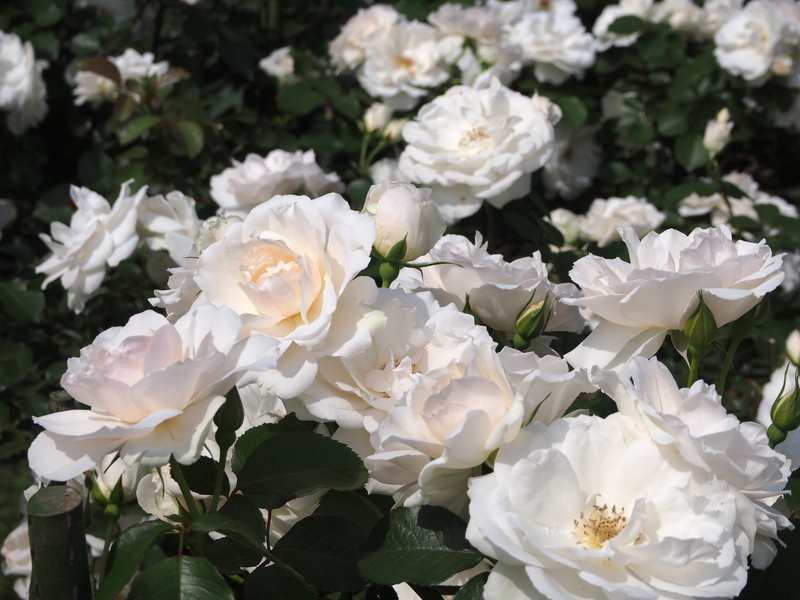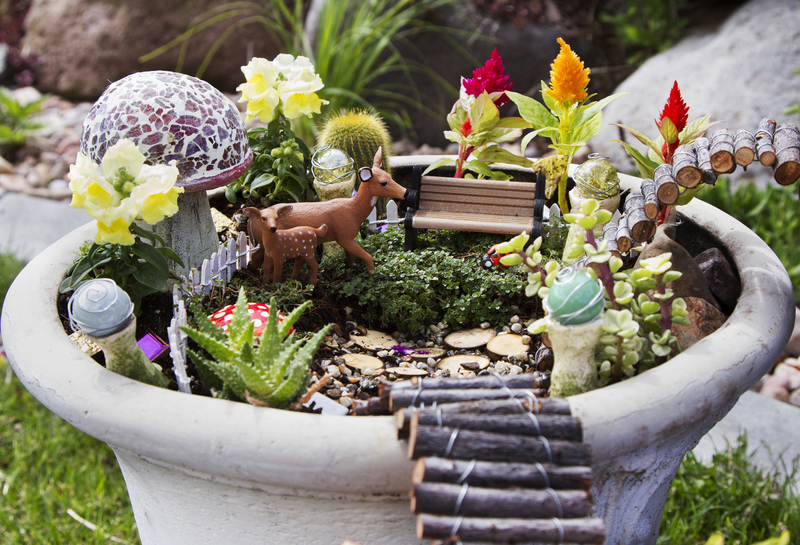Unveiling the secrets to vibrant orchid care
Posted on 21/05/2025
Unveiling the Secrets to Vibrant Orchid Care
Orchids have long captivated plant enthusiasts, gracing homes and greenhouses with their mesmerizing blooms and striking complexity. Yet, achieving vibrant, long-lasting orchid health is often perceived as an elusive art. If you're an aspiring grower or a seasoned collector looking to unlock the hidden potential of your plants, this comprehensive guide is designed to reveal the secrets of vibrant orchid care. From perfecting watering routines to ensuring optimal light, we'll transform your approach and help your orchids thrive year-round.
Understanding Orchids: Nature's Marvel
Before diving into the nuances of successful orchid cultivation, it's important to understand what makes orchids unique in the plant kingdom. The Orchidaceae family includes over 25,000 species, adapted to diverse environments--ranging from humid rainforests to arid mountains. This diversity means orchids possess a wide spectrum of needs, but some fundamental truths apply to all.
Why Orchids Are Special
- Epiphytic lifestyle: Many orchids grow on trees (not in soil), absorbing moisture and nutrients from the air and rain.
- Intricate root systems: Their roots require excellent aeration and partial exposure to light.
- Sensitive to environmental change: Dramatic shifts in temperature, humidity, or light can stress orchids.
Unlocking vibrant orchid maintenance starts with appreciating their natural history.

Essential Conditions for Lively Orchid Growth
1. Optimal Lighting
Orchids can't tolerate direct, harsh sunlight like succulents. Bright, indirect light is essential for healthy growth and vibrant blooms. Place your orchids near east- or west-facing windows, or use sheer curtains to filter the sunshine.
- Phalaenopsis (Moth Orchids): Prefer moderate light; too much dark foliage means not enough sun.
- Cattleya and Dendrobium: Require brighter, filtered light to bloom profusely.
Pro tip: Leaves tell the story: Healthy orchid leaves are bright green; dark green signals inadequate light, while yellowish hues suggest too much exposure.
2. Mastering Watering Techniques
The biggest secret to lush orchid care lies in a proper watering routine. Many novice growers unintentionally overwater, leading to root rot and plant decline.
- Orchids value drought more than deluge. Allow the potting medium to dry slightly between waterings.
- Stick your finger an inch into the pot--water only when you feel dryness.
- Water early in the day for leaves to dry before nightfall, preventing disease.
Use lukewarm, soft water rather than cold tap water, avoiding wetting the crown's center to save blooms from rot.
3. Perfecting Humidity and Airflow
Orchids flourish in environments mimicking their homeland's humidity. Aim for 50-70% humidity year-round. Low humidity results in shriveled leaves and limited flower production.
- Mist orchids regularly using a fine spray bottle--but never to the point of sogginess.
- Arrange pots on trays with pebbles and water to enhance local humidity naturally.
- A small fan ensures gentle airflow, fighting off mold and fungus without chilling your plants.
4. Soil & Potting: Mimicking Nature's Embrace
Repotting orchids into suitable media is crucial for vibrant orchid maintenance. Conventional potting soil is too dense. Instead, use specialty orchid mixes comprising:
- Pine bark chips
- Sphagnum moss
- Perlite or charcoal for aeration
Repot every 1-2 years, refreshing the medium before it breaks down and retains excess moisture.
5. Feeding for Stunning Blooms
Orchids are light feeders but still require periodic nutrition for vibrant flowering. Opt for balanced, water-soluble fertilizers specifically formulated for epiphytes, with application tips:
- "Weakly, weekly": Fertilize with a dilute solution every week during active growth.
- Skip feeding when plants are dormant or after repotting--let roots re-establish first.
- Flush pots monthly with plain water to prevent mineral buildup.
Advanced Orchid Care for Long-Term Vitality
Recognizing and Treating Orchid Problems
Even with the best routines, common orchid challenges might arise. Mastering these troubles is essential for vibrant orchid health:
- Root rot: Identify by mushy, dark roots--remove affected roots, repot in fresh medium, and reduce watering.
- Leaf spots or streaks: Often due to bacteria or fungus--trim off infected areas and improve airflow.
- Wrinkled or limp leaves: Signal underwatering or loss of root function. Check root system and hydrate gradually.
- Pest infestations: Watch for scale, mealybugs, or aphids. Treat promptly using insecticidal soap or neem oil.
Secrets to Re-Blooming Success
Many orchid owners struggle to coax their plants into flowering again. The secret involves simulating natural cues:
- Temperature drop: Reduce night temperatures by 10?F (5?C) for two weeks to trigger blooms.
- Maintain steady watering and feeding schedules.
- Provide extra light in winter with grow lamps if natural sunlight wanes.
Patience and consistency are vital. Some species require several months after resting to initiate spikes.
Repotting: When and How
Repot only when roots outgrow the pot or old medium breaks down. Carefully shake off old media, trim any dead roots, and reposition the plant with fresh mix. Always use pots with ample drainage holes.
Seasonal Orchid Maintenance Tips
Spring/Summer
- Increase watering as active growth resumes.
- Feed regularly to support leaves and spikes.
- Move outdoors to shaded patios (temperatures >60?F/16?C) for invigorating light and air.
Autumn/Winter
- Reduce watering and feeding as growth slows.
- Watch for drafts--never place orchids near cold windows or heat vents.
- Supplement light as days shorten, using grow lights or LED strips.
Frequently Asked Questions About Orchid Care
How often should I water my orchid?
Watering frequency depends on humidity, temperature, and the potting medium. Typically, once a week is sufficient--let roots dry between waterings for best results.
Why are my orchid's leaves turning yellow?
Yellowing may result from excessive sunlight, overwatering, or nutrient deficiencies. Adjust lighting, check for root health, and review fertilizer routines.
Do orchids need to be misted?
Occasional misting can boost humidity but is not a substitute for proper watering. Mist only in the morning and avoid saturating the leaf crown.
When should I repot my orchid?
Repot when roots visibly outgrow the container, the medium decomposes, or after bloom cycles end--usually every 1-2 years.
How do I get my orchid to bloom again?
Encourage reblooming by providing optimum light, inducing a short temperature drop at night, and maintaining regular feeding during growth periods.

Expert Secrets for Spectacular Orchid Displays
- Rotate plants weekly for even light exposure and balanced growth.
- Keep foliage clean by wiping leaves gently with a damp cloth to remove dust and prevent pests.
- Label your orchids by species and blooming time to track care and anticipate blooms.
- Create an orchid-friendly microclimate with grouped pots, humidity trays, and gentle fans.
- Observe daily--regular inspection reveals problems early, enabling swift solutions.
Mastery of orchid care is rooted in observation, patience, and adaptation. With diligence, anyone can unveil the radiant beauty of thriving orchid plants.
Conclusion: The Joy of Vibrant Orchid Care
Unlocking the secrets to vibrant orchid care is an adventure blending science, art, and a touch of mystery. By focusing on the essentials--appropriate lighting, mindful watering, optimal humidity, and thoughtful feeding--you can transform any space into a lush haven filled with breathtaking blooms. Don't let orchid myths intimidate you!
- Experiment with different varieties and observe individual preferences.
- Share knowledge with fellow orchid lovers to learn and grow together.
- Celebrate small milestones--each new leaf or spike is a triumph of successful care.
Now that you have the insider secrets to orchid vitality, embark on your orchid journey with confidence and wonder. Let the world of vibrant orchids inspire your home, purify your air, and brighten your days with nature's most elegant flowers.

